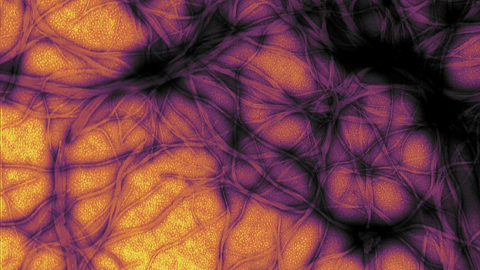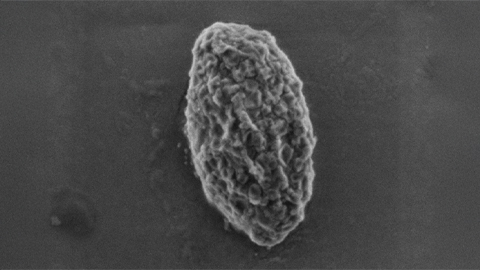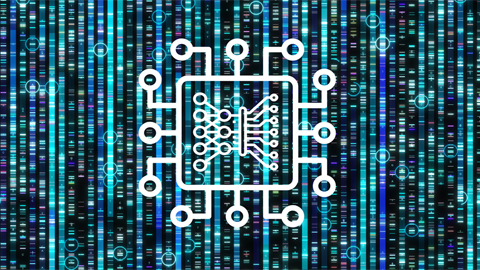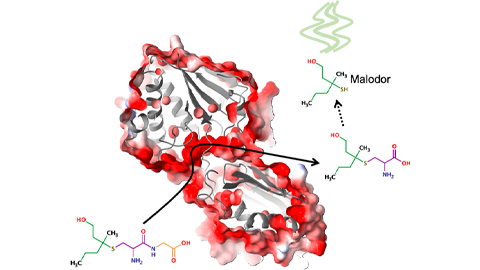JBC: What makes organelles connect?
Inside every cell is a complex infrastructure of organelles carrying out different functions. Organelles must exchange signals and materials to make the cell operate correctly. Researchers are using new technologies to see and understand the networks that connect these organelles, allowing them to build maps of the trade routes that exist within a cell. A recent article in the Journal of Biological Chemistry reports the use of an emerging method to identify proteins that allows two organelles, the mitochondria and the endoplasmic reticulum, to attach to each other.
 Live-imaged HeLa cells with the endoplasmic reticulum labeled red and mitochondria labeled green.courtesy of Ginam Cho
Live-imaged HeLa cells with the endoplasmic reticulum labeled red and mitochondria labeled green.courtesy of Ginam Cho
Jeffrey Golden, a professor at Brigham and Women’s Hospital and Harvard Medical School, oversaw the work. “Think of (an organelle) like a ferry docking at one site, unloading and loading passengers and cars, and then going to another site and doing the same thing,” Golden said. “Their ability to dock, load and unload cargo requires guides or ramps of specific widths and heights that connect the boat and land, or they cannot freely load and unload.”
Contact points between the endoplasmic reticulum, or ER, and mitochondria are the “ramps” and “guides” that enable these contacts. They permit important activities like signaling, exchange of calcium and lipids, and control of mitochondrial physiology. Faulty connections between the ER and mitochondria have been implicated in several neurodegenerative diseases, including Alzheimer’s, Parkinson’s and Huntington’s disease. The proteins that connect and bridge the ER and mitochondria are well-studied in yeast, but the connections between these organelles in multicellular organisms like mammals are more complex and less understood.
Golden’s collaborator Ginam Cho and research fellow Il-Taeg Cho had the idea to search for proteins important for ER–mitochondrial contact using a method recently developed to show contact between proteins. The method takes advantage of an enzyme called ascorbate peroxidase, or APEX, which can attach biotin to proteins nearby. The team engineered cells to produce mitochondria that had APEX attached to their outer membranes and then added biotin to the cells for the APEX to use to label nearby proteins.
The team then isolated parts of the cell that contained the ER, purified those proteins that had biotin attached and identified the ones found in the ER using mass spectrometry. Because the APEX was attached to mitochondria, only those proteins that came into close proximity to the mitochondria could have had biotin attached. Thus, the biotin served as a kind of passport stamp that indicated which proteins had been involved in the ER-mitochondria contact.
“It was previously feasible to only look at one molecule at a time to assess what it interacted with,” Golden said. “The method we have used is more rapid and allows an unbiased look at a whole system and what’s happening at that organelle’s interface.”
Using this screening method, the researchers zeroed in on an ER protein called RTN1a, which previously was known to contribute to the ER’s shape. In follow-up experiments, they confirmed that this protein also helped mitochondria to attach to the ER.
This study raises the possibility that defects in RTN1a could contribute to the problems experienced by patients with neurodegenerative diseases, but the researchers won’t know for sure until they conduct additional experiments, including similar studies in neural cells.
Golden speculates that the proteins important for ER–mitochondrial contact might be different in different cell types.
“Does the liver use the same proteins to control these kinds of interactions that neural cells do? Is one (protein) more important for calcium exchange and another set of proteins more important for lipid exchange?” Golden asked. “I think there’s a lot of cell biology that we just don’t know and could be answered.” The team now is using the APEX-mass spectrometry method to compare proteins involved in ER–mitochondrial contacts between normal and patient-derived neural cells.
“There are a lot of interesting things we can do,” Il-Taeg Cho said.
Enjoy reading ASBMB Today?
Become a member to receive the print edition four times a year and the digital edition monthly.
Learn moreGet the latest from ASBMB Today
Enter your email address, and we’ll send you a weekly email with recent articles, interviews and more.
Latest in Science
Science highlights or most popular articles

Before we’ve lost what we can’t rebuild: Hope for prion disease
Sonia Vallabh and Eric Minikel, a husband-and-wife team racing to cure prion disease, helped develop ION717, an antisense oligonucleotide treatment now in clinical trials. Their mission is personal — and just getting started.

Defeating deletions and duplications
Promising therapeutics for chromosome 15 rare neurodevelopmental disorders, including Angelman syndrome, Dup15q syndrome and Prader–Willi syndrome.

Using 'nature’s mistakes' as a window into Lafora disease
After years of heartbreak, Lafora disease families are fueling glycogen storage research breakthroughs, helping develop therapies that may treat not only Lafora but other related neurological disorders.

Cracking cancer’s code through functional connections
A machine learning–derived protein cofunction network is transforming how scientists understand and uncover relationships between proteins in cancer.

Gaze into the proteomics crystal ball
The 15th International Symposium on Proteomics in the Life Sciences symposium will be held August 17–21 in Cambridge, Massachusetts.

Bacterial enzyme catalyzes body odor compound formation
Researchers identify a skin-resident Staphylococcus hominis dipeptidase involved in creating sulfur-containing secretions. Read more about this recent Journal of Biological Chemistry paper.

.jpg?lang=en-US&width=300&height=300&ext=.jpg)